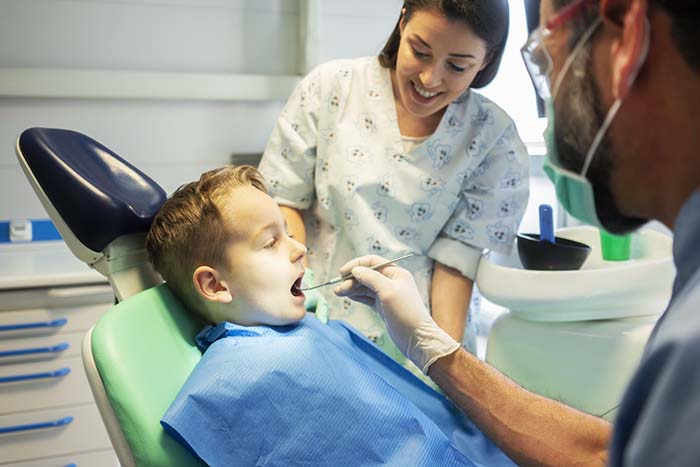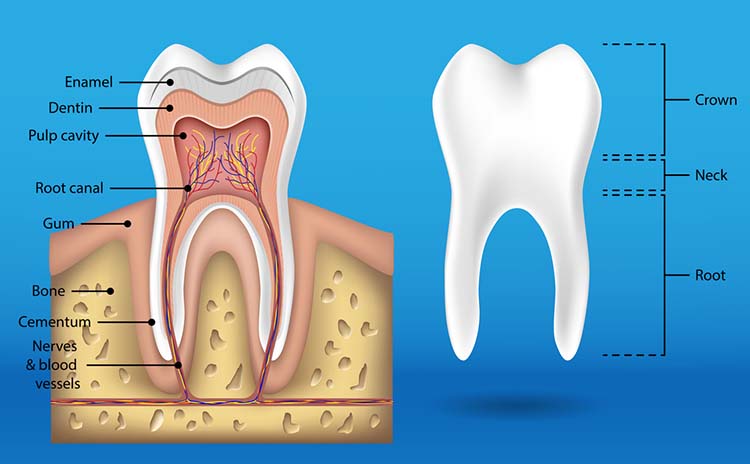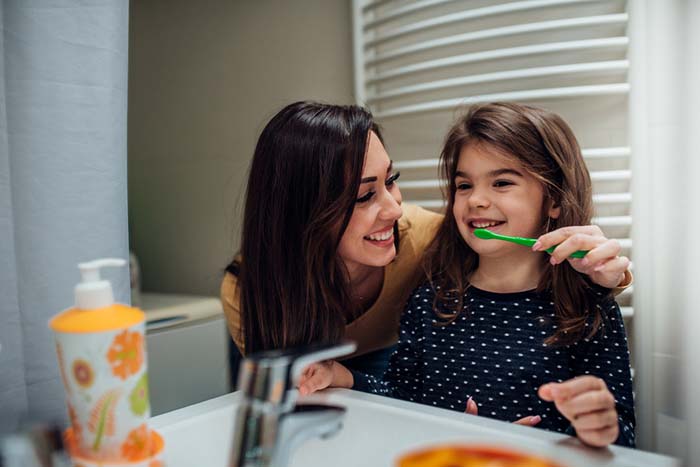When the inner pulp of a tooth becomes infected, the typical treatment for adults is a root canal. However, a procedure called a pulpectomy is often the best option for saving a primary (baby) tooth in children. A pulpectomy involves removing the entire pulp from a primary tooth in an attempt to relieve pain associated with an infection and to prevent a complete extraction of the tooth.
What is Dental Pulp?
Every one of your child’s teeth has a sensitive inner dental pulp, which is the living part of the tooth. This is true for both baby teeth and permanent teeth. This pulp is soft and contains the nerve endings and blood supply that are necessary to keep the tooth alive and healthy.
The role of the dental pulp is to provide the tooth’s sensory function, including the detection of hot and cold temperatures, and the circulation of nutrient-rich blood through the tooth. Most importantly, the pulp produces dentin, or calcified tissue, that strengthens and supports the tooth.
Why Would Your Child Need a Pulpectomy?
The most common reason for a child needing a pulpectomy is because a cavity went untreated for too long, and the soft pulp within a child’s tooth becomes infected. Sometimes decay will develop under a restoration, such as a filling, and the tooth’s pulp is eventually damaged. Once the infection reaches the pulp, your child may complain of toothache and pain, as well as tooth sensitivity, especially to hot and cold temperatures.
Another reason for needing this procedure is because your child has sustained some type of dental trauma or injury that has caused a tooth to crack or break. Oftentimes, breaks and cracks aren’t severe enough to warrant a pulpectomy. However, if the crack is deep enough to expose the inner pulp, it can cause severe pain and sensitivity until a pulpectomy is performed. Pulpectomies are specific to children’s baby teeth because the roots are slightly different than permanent teeth.
What Happens During a Pulpectomy?
The pulpectomy procedure typically begins with a local anesthetic that is used to numb a specific area of your child’s mouth. A rubber dental dam is placed over the open tooth to keep it completely isolated from any bacteria and saliva in the mouth. The dentist will then remove any decay, take out the inner pulp using specialized dental instruments, and disinfect the inside of the tooth.
The canals of your child’s baby teeth are then filled with a medicated material as well as therapeutic dressing. The material that is used to refill the canals is safe and can be easily reabsorbed by the body once the baby tooth falls out. Once complete, the dental dam is removed, and your child can leave the office right after the procedure. Your child may experience some sensitivity in the area for a few days, but any discomfort should taper off quickly.
Why Not Just Remove the Tooth Completely?
You might be wondering why the dentist wouldn’t just remove a tooth that’s eventually going to fall out on its own anyway. The fact is baby teeth serve more than one purpose. Removing baby teeth can have a serious impact on the way your child is able to eat and speak. For example, too few baby teeth will make chewing very difficult, increasing the chances of choking because the child is unable to grind down the food properly.
Your child’s baby teeth also affect how the permanent teeth fall into place. You can think of their baby teeth as markers that give the permanent teeth a place to go when they eventually erupt through the gums. By removing one or more baby teeth, this can ultimately result in severe orthodontic crowding, misalignments, and malocclusion. Also, children’s confidence and self-esteem will benefit from having all their baby teeth, rather than missing teeth prematurely.
Ways to Help Your Child Avoid a Pulpectomy
The best way to avoid a pulpectomy is to prevent tooth decay and infection in the first place. This can be done with proper oral hygiene at home. As a parent, it’s vital to help your kids brush their teeth and build a strong dental health routine. Many cavities develop with teeth that are harder to reach, so thorough brushing and flossing can help to remove plaque and bacteria in these areas.
Along with teaching your kids how to brush and floss their teeth, it’s also crucial to see your pediatric dentist for regular checkups. Each appointment will include a comprehensive cleaning, as well as x-rays and a thorough exam of the mouth. If your dentist is able to detect cavities earlier, a less invasive treatment, such as a tooth filling, can remedy the problem rather than having to undergo a complete pulpectomy.
It’s also important to note that pulpectomies aren’t always the best option for every child and all baby teeth. In some cases, extraction is the better solution and can help to keep your child’s smile healthy and strong. Consult with your pediatric dentist to learn the different options available and what treatment is recommended for your child.


Regular Price:
$179
With this offer, there’s no excuse not to get back on track! Schedule a complete exam and x-rays for only $39 and ensure you have a beautiful healthy smile.


